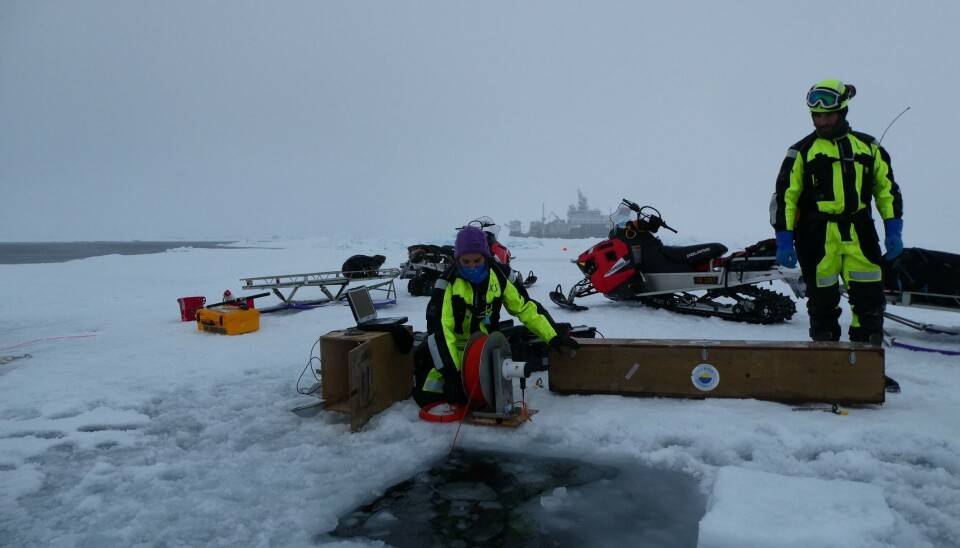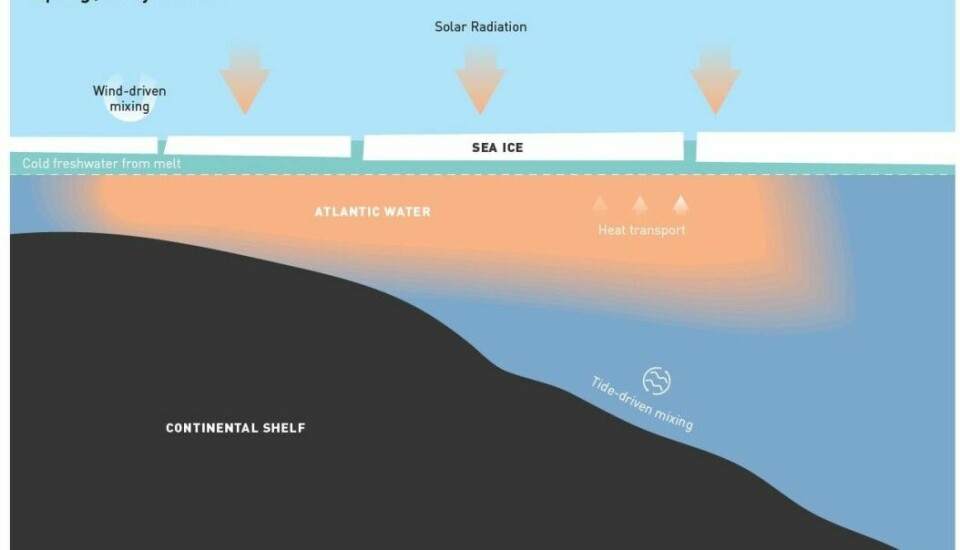
The Arctic Ocean blender system
The Arctic Ocean is composed of different layers organized on the vertical, and these layers have different temperature and salinity properties. A cold and fresh surface layer caps a warm and salty layer of Atlantic Water. The heat contained at depth (about 300m) in the warm and salty Atlantic Water could melt the entire Arctic sea ice cover if it reached the surface. It does not happen because the cold surface layer caps this Atlantic layer quite well and keeps it at depth. However, in some regions, such as north of Svalbard, sea ice melts in summer even though it is -30 outside. How is that possible?
It is because some exchanges are possible between the water masses. That’s what we call the mixing of the ocean, like what we can have in a bathtub when we mix warm and cold water by hand to get a homogeneous temperature.
How does that happen in the ocean?
It is of course not a hand mixing the ocean, but other factors. The two main factors are the wind with its storms, but also the tide can mix the ocean. There are two main types of mixing in the Arctic; vertical mixing which can bring the heat of the Atlantic Water towards the surface in the Arctic, and horizontal mixing with eddies which brings warm Atlantic Water from along the slope into the middle of the Arctic Ocean. In addition to transporting heat upwards, vertical mixing contributes greatly to transport gases such as oxygen and carbon dioxide (CO2) in two ways, bringing CO2 from the surface ocean to the deeper layers, as well as bringing up water rich in CO2 to the surface ocean.
In the Arctic, the sea ice tends to block the influence of the wind on the ocean, which is why the Arctic is known as the ‘quiet’ ocean. Sea ice is declining due to climate change, leading to increased open water and leads (fractures between two pieces of sea ice). But with climate change, there is less and less sea ice and then more and more open water and leads, so, we can expect that the storms will mix the ocean more and more, and hence could bring more and more heat towards the sea ice... and increase the gas exchange between ocean and air. But at the same time, with more melting of sea ice, this cold and fresh layer on top of the Atlantic layer becomes thicker, which reduces the mixing between the warm Atlantic layer and the surface.

So what will win? The sea ice melt or the wind?
This is something that we as researchers are still looking into! We use a lot of different tools, such as models where we impose a lot of sea ice melt or a lot of wind, or observations.
During this cruise in the Arctic Ocean, we will look into the mixing of the ocean by using an MSS profiler (Microstructure profiler). This instrument measures small (a few centimetres) vertical variations of the temperature, salinity and current speed of the ocean, which gives us an estimate of the vertical mixing of the ocean. To understand more on the role of sea ice and winds on gas exchange and transport, we will measure oxygen and CO2 from sensors beneath the ice. With all the measurements, we hope to better understand how the Arctic Ocean works and how the Arctic Ocean blender system evolves with the climate change!







